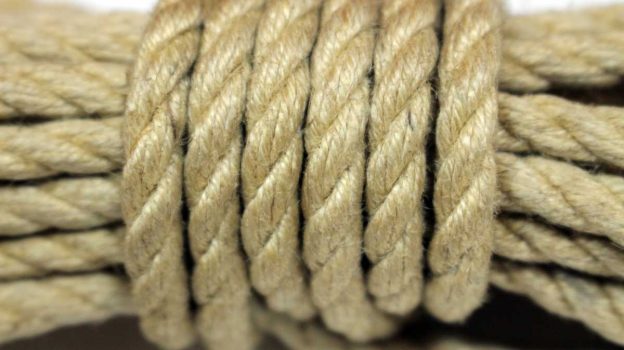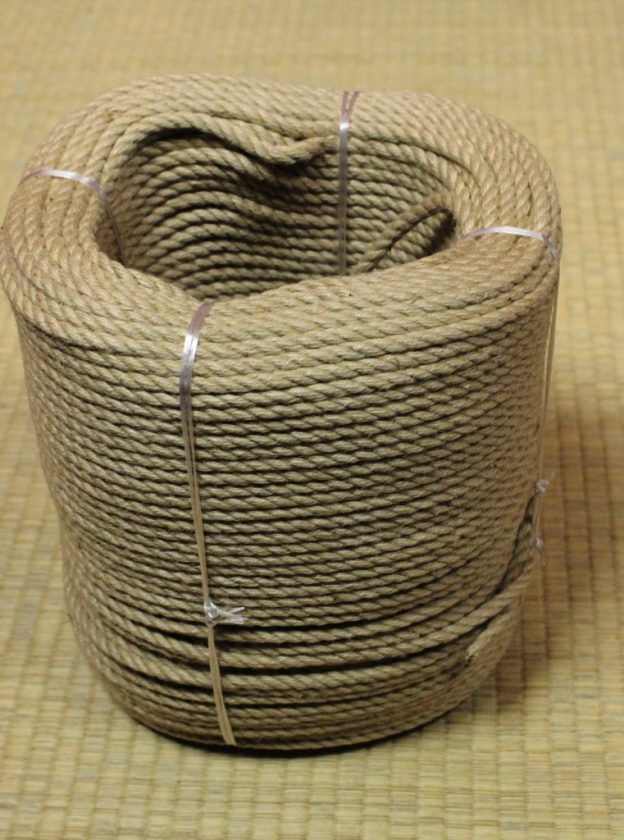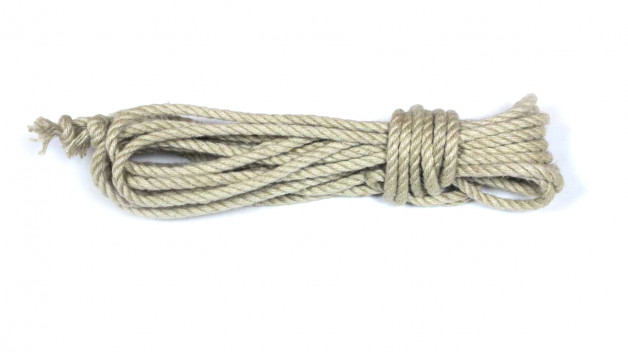The bad news and the good news
For now, the bad news is we are not supplying the long-awaited Econawa jute. The good news is that Econawa Newaza is the perfect floor-work rope at a price you are going to love. Let me tell you how this came about.
Not long ago, I wrote enthusing about Econawa, a very special jute rope which we had developed for us. It finally arrived and the delivery seemed perfect as it ticked all the boxes:
- Super clean top grade blonde fibre
- JBO-free, i.e. no oily smell
- So soft and flexible that it can just be dry treated
- Unique super-stable construction
- Fast and light

One small issue
Unfortunately, it soon came apparent that there was a very minor defect that was not immediately visible, leading to a product recall.
So you understand what happened. let me clarify the construction, which is rather unusual. Each of the 3 strands comprising this rope has 7 yarns (6 wrapped around a central core yarn). Each of these 7 yarns, is made up of 5 yarns twisted together. In each of the 3 main strands, the central core yarn is broken every few centimeters, i.e. 15 in the total of 105 yarns. It seems that the core yarn was under too much tension during manufacture and the twisting of the other yarns caused it to break. This effected the entire 20,000m delivery.
My understanding is that this only has a very minor effect on the actual strength of the rope as core yarns are more to form the twists than for tensile strength. However, at this stage it was an unknown and certainly something I was not prepared to risk selling.
You can see what I have described above in the video below.
The real world effect
Fortunately, I recently bought an industrial 1,000kg load cell kit with the intention of doing some rope break tests. You can read about the tests here. In short, I quickly realised that mere tensile strength was largely irrelevant as knots and friction are the usual trigger for breaks in the way we use the rope. Consequently, I decided to do some experiments to mimic a suspension lift. To ensure I recoded pretty much worst case scenario, I used dry untreated rope which would maximise friction. Although, it does appear that using my preferred method of a double lifting bight gave some advantage over a single bight which caused more damage (No! Not vice versa!).
Here is a video of 12 suspension simulation destruction tests. The tests varied by 79kg from best (194kg) to worst (115kg), although this range could be due to the fault. Regardless, it only goes to show that natural fibre can be very unpredictable and one should never compromise on critical suspension lines. I recommend always using a stronger main line, e.g. tie with 5mm but use at least 6mm for main lines. For full reassurance, it’s best to use a rated main line.
Given there is a defect, however insignificant it might be, I would not be comfortable selling this rope for suspension. Of course, that said, nobody can warrant unrated rope, especially natural fibre, as suitable for suspension. However, it is perfect for floor-work where optimum strength is simply not an issue.
My loss, your gain
As this rope is eminently suitable for floor-work, I am re-branding it specifically for this purpose as ‘Econawa Newaza’ at price you simply can’t refuse.
My suppliers have accepted the fault and we have come to a gentlemanly arrangement. The end result is that I have some significant savings to pass on to you. It is available in standard 8m lengths and longer 10m sets or, for ridiculously low prices, by the 160m coil.


